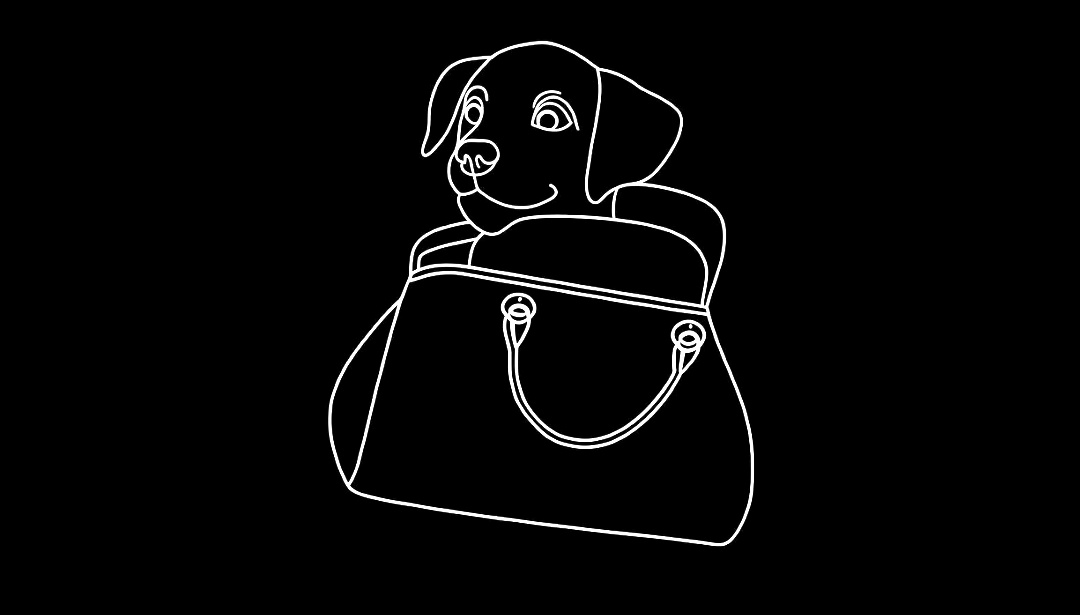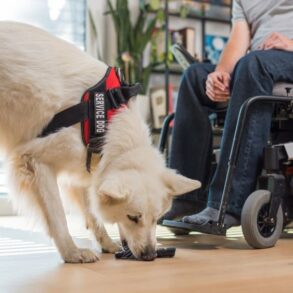
We like to think of our dogs as perfect creatures — because, well, they are. But if we’re totally honest with ourselves, there are probably one or two things they could work on. Before you get defensive, rest assured that dealing with a few challenges doesn’t make your pet a bad dog — in fact, it turns out that it makes them incredibly normal. A recent studyopens in a new tab published in the Journal of Veterinary Behavior found that 99.12 percent of dogs have behavioral issues.
Researchers analyzed data from the Dog Aging Project (DAP),opens in a new tab a long-term scientific study which maintains a survey database of over 43,000 dogs and countingopens in a new tab. For the DAP survey, pet parents rated behavioral issues on a scale from zero to four — zero meaning there is no problem, and four meaning the problem is serious. When researchers examined how many dogs had either one moderately serious to serious problem (rated three to four) or two moderate to serious problems (rated two to four), they found that nearly every single dog fit the bill.
Some of the troubles were more common than others. Separation and attachment behaviors were the most popularly reported problems, with 86 percent of dogs experiencing moderate to serious issues. Fifty-six percent of dogs had trouble with aggression, and half of dogs struggled with fear and anxiety behaviors.
Of course, most manifestations of behavioral challenges aren’t cut and dry. “The questions used in the study are not intended to be a diagnosis, and many behaviors overlap into different categories,” Dr. Bonnie Beaver, a study co-author, told Texas A&M.opens in a new tab “For example, anxiety and separation are often related behaviors, but questions about them were put into separate categories. Dogs may act aggressively out of fear, but again the questions about each were in separate categories. So, a fear-biting dog may not be obvious in the results.”
What you can do
Beaver proposes that veterinarians and pet parents should work together to keep an eye on their pet’s problematic behaviors before they escalate. “Some studies report that only 50 percent of veterinarians ask questions about behavior during appointments, and owners may not think to ask the veterinarian about something they don’t like,” Beaver told Texas A&M. “This has to change, so we don’t end up missing half of the problems.”
She recommends that pet parents start by learning how to read their pet’s body language.opens in a new tab This is especially important when it comes to aggression, which can become dangerous if misunderstood. “Aggression is a normal behavior in animals and it happens for a reason,” Beaver told Texas A&M. “So, you need to consider why the dog is behaving that way. Is it fearful? Is it being threatened by a little kid getting too close, somebody staring in its eyes, by a bigger dog coming toward it, or by a stranger approaching? As veterinarians, we’ve got to look at the context in which a behavior happens to try and appreciate what might be going on in the animal’s mind.”
This is vital, she adds, when it comes to dogs who interacts with kids, who are unlikely to be able to adequately understand a dog’s perspective. Children should be taught how to interact with pets and encouraged to give any unknown dog space.
Overall, it’s important that people give plenty of attention to their dog’s behavioral issues — even if they’re common. Helping a pup overcome the fears that motivate most bad behaviors is the best thing you can do for both of you. If you need to bring in the big guns, a certified dog trainer opens in a new tab can be a life-saver. And even if your pup can’t 100 percent abandon their old ways, there are positive tactics you can use to manage their behavioropens in a new tab.
And while dog training should be taken seriously, no one should be discouraged from adopting a dog by the sight of such a high statistic. After all, as hard as it may be to believe when looking into those wide puppy eyes, no one’s perfect.
This post was originally published on this site be sure to check out more of their content.












































